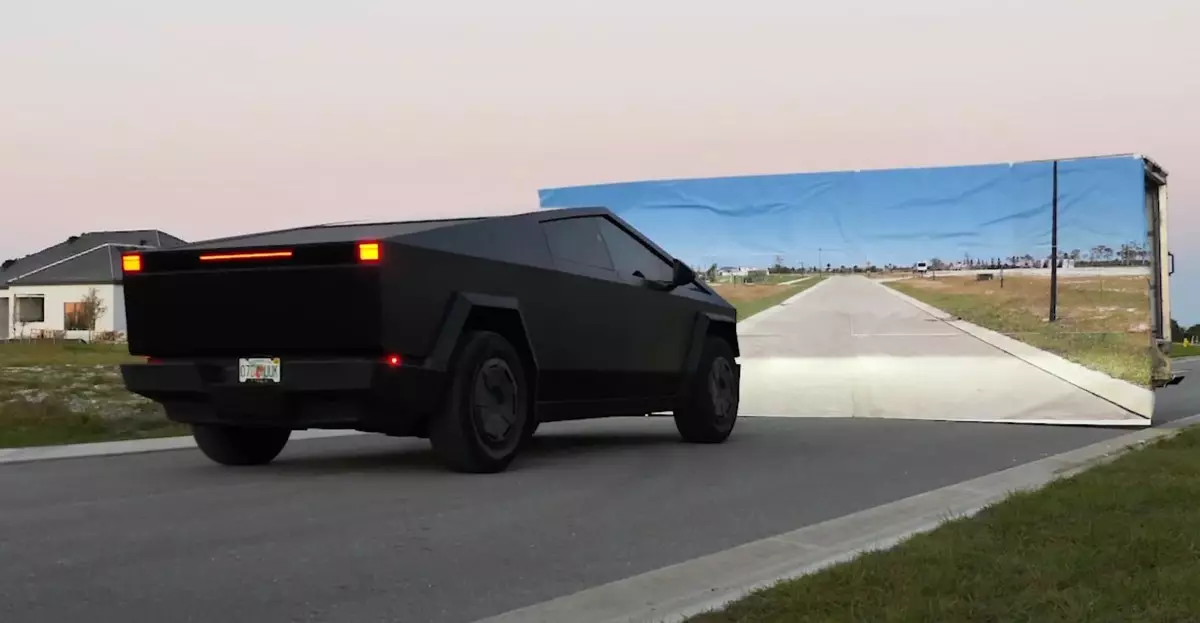The rapid evolution of autonomous vehicles has captivated enthusiasts, skeptics, and the general public alike. Recently, a popular YouTuber, Mark Rober, took it upon himself to challenge Tesla’s Full Self-Driving (FSD) capabilities by staging a humorous yet revealing experiment—a ‘Wile E. Coyote’ wall test. This involved a fake wall, designed to simulate an unexpected road obstruction, testing whether Tesla’s technology could recognize and react appropriately. However, the results were less than reassuring, prompting further investigation into the reliability of these systems.
Examining the Critique
In the wake of Rober’s findings, fellow creator Kyle Paul decided to contribute to the conversation by repeating the test with two Teslas: a Model Y and the highly anticipated Cybertruck. The importance of these tests cannot be overstated, as they delve into consumer concerns over safety and efficacy of autonomous technologies. Can the FSD system, which boasts advanced algorithms and features, really function effectively in real-world scenarios?
Paul’s results highlighted a troubling inconsistency within Tesla’s FSD offerings. Although the Model Y struggled to identify the wall, necessitating manual intervention to prevent a collision, the Cybertruck showcased a more favorable outcome. It was able to detect the wall and halt automatically. This contrast raises crucial questions about the reliability of Tesla’s neural networks, especially considering the implications of sending vehicles into crowded urban environments where split-second decisions are paramount.
Public Perception and Consumer Trust
The reactions to these tests reveal much about the public’s perception of self-driving technology. Enthusiasts argue that tests like these are essential for transparency, shedding light on moments where artificial intelligence, despite its touted capabilities, falls short. Conversely, skeptics might point to incidents like Rober’s experiment as evidence that Tesla’s FSD remains a work in progress at best—or a dangerous gamble at worst. To build trust, Tesla must not only refine its technology but also effectively communicate its limitations.
Consumer safety should remain the foremost priority as auto manufacturers navigate the landscape of autonomous vehicles. The varying results from two separate models suggest a fractured understanding of Tesla’s FSD proficiency. This inconsistency can lead to disillusionment among customers who expect a singular vision of reliability and intuitive design across the board.
Innovation vs. Reality: The Road Ahead
Ultimately, the developments surrounding Tesla’s FSD point to a greater discourse on technological innovation. While Tesla, heralded as a pioneer in electric and autonomous vehicles, may have designs that capture the imagination of consumers, the reality on the road reveals a more complex narrative. The frustrations exhibited in Rober’s and Paul’s videos underscore a critical need for continual testing and improvement.
As we look ahead, it is crucial for the automotive industry to ensure that innovations don’t just level up in terms of features but also in terms of making the public feel safe and secure in the technology they’re adopting. Through rigorous testing and transparent communication, companies like Tesla can work toward turning the promise of autonomy into a fulfilled reality, ultimately making roads safer for everyone.


Leave a Reply